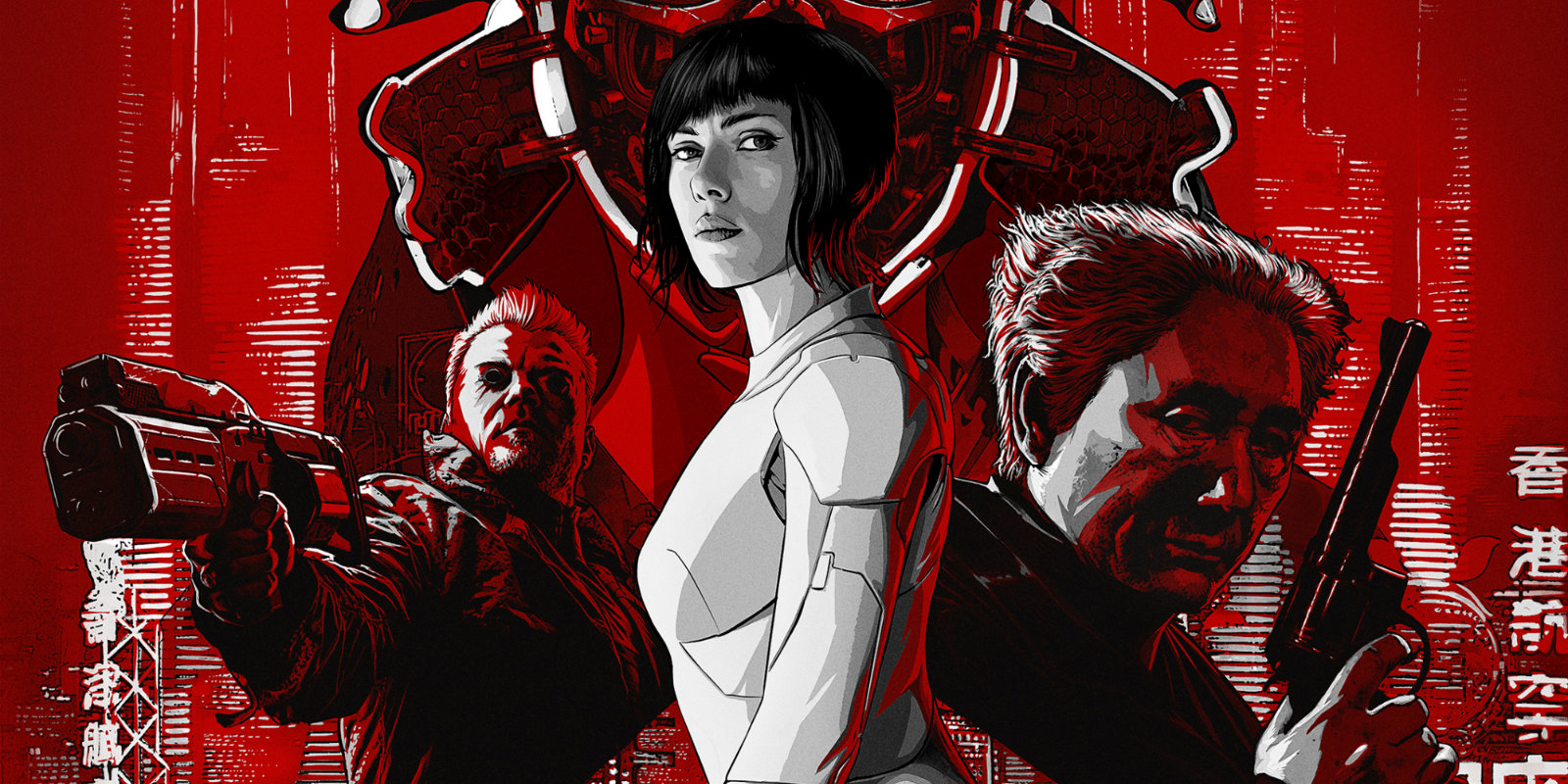Ghost in the Shell is considered to be one of the most influential, groundbreaking anime OVA’s (original video animations), of all time. Back in 1995, this OVA can be credited with seriously kick-starting demand for Japanese anime in the West, with its source manga by Masamune Shirow also being hailed as one of the most intelligent and forward-thinking manga concepts of the time. That creates some very big shoes to fill for a live-action Ghost in the Shell movie adaptation by Hollywood, and that’s before considering another truth that has become very apparent in recent years; Hollywood and anime do not get along very well!
This truth is primarily evidenced through the likes of 2008’s dizzying mess, Speed Racer, and 2009’s abysmal butchering, Dragon Ball: Evolution, and was glanced back in the 90’s with the likes of the two (yes, two) Guyver movies. Taking loose inspiration from anime has at least benefited certain movies like The Matrix, but more often than not, efforts to adapt anime for Western moviegoing audiences have always ended in disaster. That’s why it’s refreshing to see that this new live-action Hollywood take on Ghost in the Shell is actually not a disaster, and manages to be a very competent adaptation of its source material!
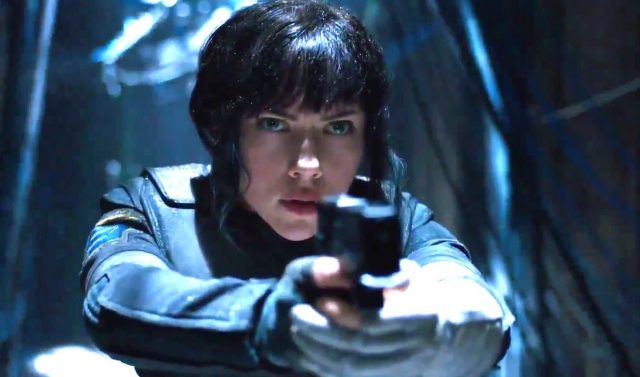
As much as it’s competent and gorgeously put-together though, Ghost in the Shell still has some considerable flaws, and doesn’t present many elements beyond the presentation that are particularly inviting to everyday moviegoers. This was once a groundbreaking story, but it’s since had its ideas expanded upon and further developed by more contemporary media, Japanese or otherwise, and that leaves Ghost in the Shell feeling a bit more dull than it should be in 2017. If you respect anime, or just want a visually gorgeous sci-fi movie, then Ghost in the Shell should be experienced on the big screen, particularly in its extra-beautiful IMAX 3D cut if you have that option. You’ll definitely need some patience though, since the story isn’t as engaging now as it was in 1995.
Ghost in the Shell stars Scarlett Johansson as the Major, who is now named Mira Killian in this American adaptation, though her original Japanese identity is still a part of the movie in a way that I won’t spoil. Major works for a government anti-terrorist organization called Section 9 in the far future, having a fully cybernetic body that houses an unaltered human mind, thus making her the organization’s most capable soldier, and the first creation of her kind. As with the source anime, much of Ghost in the Shell involves Major questioning her human identity, and how it’s preserved in her machine body. This is reflected further throughout this vision of the future in general, where widespread cybernetic enhancement has become a socially and medically acceptable way to enhance human potential and quality of life.
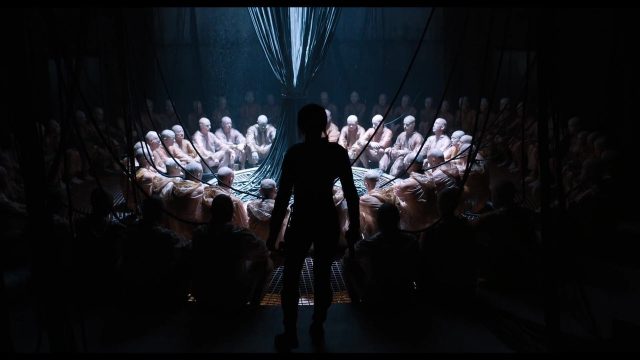
There’s been plenty of controversy surrounding the casting of Johansson in the lead role, but frankly, Johansson’s casting in the movie really does feel appropriate. She’s not the only actress who could have played this part, granted, but she plays Major well, balancing the appeal of a badass killing machine with an undeniably vulnerable, introspective human touch. Johansson also easily resembles the anime incarnation of Major well enough to avoid her casting being all that distracting to fans of the anime who aren’t going out of their way to find it offensive. Fans of Johansson in general will enjoy her performance here, even if it is basically blending the cerebral godliness of Lucy with the popcorn action stylings of Johansson’s role as Black Widow in the Marvel Cinematic Universe.
Speaking of Lucy, Johansson also reunites with Danish actor, Pilou Asbaek from that movie as Major’s Section 9 partner, Batou, with viewers possibly also recognizing Asbaek as Euron Greyjoy from Game of Thrones. Like Johansson, Asbaek is clearly not Japanese, but he also embodies his character from the anime pretty much perfectly, right down to his affinity for dogs. You’ll also notice the other core Ghost in the Shell lead heroes being present, between celebrated Japanese performance artist, ‘Beat’ Takeshi Kitano as Chief Daisuke Aramaki, the head of Section 9, and Chin Han as fellow Section 9 soldier, Togusa, who stubbornly refuses to outfit himself with any cybernetic enhancements. Kitano’s casting can be a bit distracting, since he’s the only character that exclusively speaks Japanese in a movie that supposedly takes place in Japan, but at least it’s appreciated that the filmmakers are doing what they can to honour the source anime’s Japanese flavour, without sacrificing the Hollywood touch in the process.
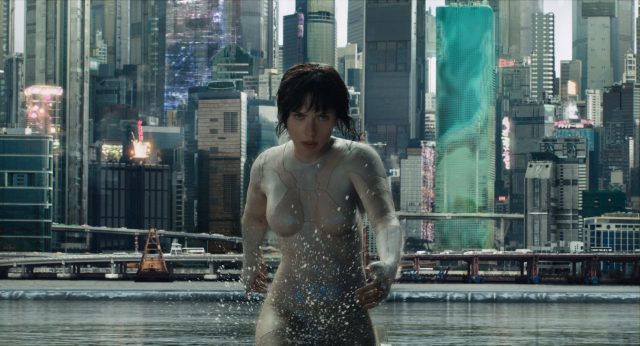
The circumstances behind the movie’s villain are also quite considerably changed from the source anime, which is likely the largest alteration in this adaptation. Instead of the sentient force of The Puppetmaster, we instead have a super-hacker called Hideo Kuze as the main antagonist in this movie, played by Michael Pitt, who serves as the movie’s key foe to Section 9. This character was actually part of the Japanese Ghost in the Shell TV series, Stand Alone Complex, as another major villain that came later. The point of the revised villain in this case is to move the themes away from the philosophy of man-vs.-machine, and towards more of a personal connection to Major, which is a greater priority in this Hollywood adaptation in contrast to the original anime. Similarly, Juliette Binoche portrays one of the lead designers of Major’s cybernetic body, Dr. Ouelet, a character that is completely made up for this Hollywood adaptation, and designed mainly to keep probing Major’s lingering human curiosity.
If there is one thing that Ghost in the Shell genuinely improves upon in its live-action Hollywood incarnation, as much as the anime does most of the intelligence behind the material more justice, it’s the fact that Major is a better-developed and more fleshed-out character in this movie than she was in the anime. Between the addition of Dr. Ouelet, the more personal villain connection, and another surprising family connection for Major later in the movie that proves to work surprisingly well, it feels like this Hollywood adaptation has reversed the story perspective of its hero, making Major a first and foremost human struggling with a machine body in this case, rather than a machine that wants to understand humanity. For better or worse, this is a decent way to separate this movie from the source anime, by inverting the foundation of the journey for its lead character.
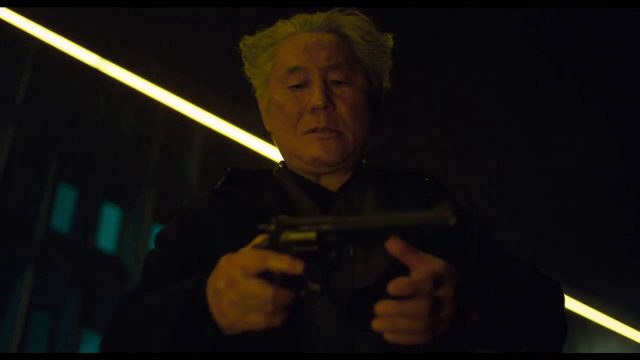
There are still moments lifted straight from the anime that nonetheless show Major questioning the idea of what makes someone human however, and Johansson still intentionally plays the character to have a cold, quiet and hollow nature that feels credible. This version of the story does opt to diminish the brains so it can add a bit more heart though. Bear that in mind when you’re considering what you’re seeing this movie for.
Ghost in the Shell tells a highly cerebral and philosophical story that was unlike anything that most people in Japan or the West had ever seen before back in 1995. In 2017 though, we’ve had a lot of high-profile media that sometimes ironically took inspiration from the original Ghost in the Shell anime, between movies, television shows, video games, comic books, and whatever else you can name, which makes Ghost in the Shell feel at least a bit more quaint than it used to be in this 2017 movie adaptation. Not helping matters is the fact that the movie aims to be very faithful to the methodically-paced and introspective anime in terms of how it tells its story, which means, to put it politely, it’s not really a fast-paced movie. In fact, it has some real dull stretches, especially in the second act.
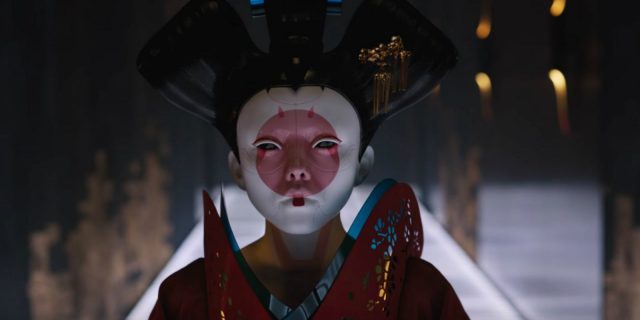
Anime fans who are crossing their fingers that this movie honour its source will at least be satisfied that this much is true, but if you’re not an anime fan, you may be disappointed that there isn’t a bit more excitement in Ghost in the Shell. Whatever action scenes are present are all very well-done and engaging, and some of the thematic moments with Major are definitely very cool, especially considering how universally well-produced this movie is. There’s no getting around the fact that Ghost in the Shell can be disappointingly boring compared to many other Hollywood sci-fi movies though. That’s before the acknowledgment that even fans of the original anime will also no doubt notice that some of the grander philosophical ideas from the source media have been noticeably dumbed down a bit in this movie. They haven’t been removed entirely of course, but they have been distilled just a bit, in favour of making an adaptation that’s more about human connection than abstract philosophy.
Rupert Sanders directs Ghost in the Shell, having previously helmed 2012’s Snow White and the Huntsman, another movie that succeeded more at its production values than its storytelling. Sanders clearly has an eye for style, but doesn’t always know how to create engaging characters. Perhaps that works to his advantage in the case of Ghost in the Shell however, since it’s a movie about the diminished humanity of its main character especially.
As with Sanders’ previous attempt at a blockbuster, he proves to be an expert at bringing the world of Ghost in the Shell to wonderful live-action life, at the very least. There is highly impressive, thoroughly painstaking detail put into translating the source anime to the Hollywood movie medium, with the world around the characters often telling its own story to inspired effect. Both the characters and the world are set up in such a way so as to feel faithful to the source anime, while also providing enough of a distinct vision to feel like a worthy new addition to this beloved Japanese media franchise. Whenever the story doesn’t grab you, at least you will be constantly immersed in the movie’s world, both its real-world future, and its visually ambitious trips into cyberspace that completely throw out the rules of expectation and logic, in a good way!
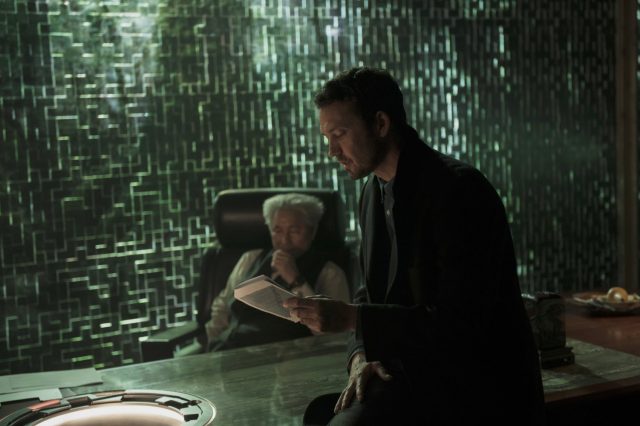
It’s very clear that Sanders has an avid love of the original Ghost in the Shell anime, since his main directing priority seems to be honouring it as much as he can. Some shots from this movie are taken directly from the anime, and translated beautifully into live-action, which will surely delight fans of the source media. Again though, a well-realized world on its own doesn’t manage to perfectly elevate a story that is far less engaging, especially when so much of its ideas have been expanded upon and done better by numerous Western and Japanese media that has released since 1995. Still, this does undeniably feel like a truly genuine Ghost in the Shell product, even at the expense of more mainstream entertainment value sometimes. In short, it feels like Sander is designing the movie for fans of anime, rather than mainstream audiences, which can be a double-edged sword in terms of how inviting it is to the uninitiated.
As much as the visuals will be what immediately grabs your attention with Ghost in the Shell, even just seeing trailer shots of it in passing, I must also say that the movie’s music score is legitimately incredible! The famous main chorus theme from the original anime isn’t in the movie proper, disappointingly, but it does still play over the credits, and thankfully, you won’t miss the original anime’s compositions beforehand anyway.
The score of this Hollywood adaptation of Ghost in the Shell is a collaboration between Clint Mansell, who is known for arranging the soundtrack to the award-winning Black Swan from 2010, and Lorne Balfe, who is a more blockbuster-friendly composer that has most recently done the soundtrack from this past February’s superb The LEGO Batman Movie. This creates a genuinely effective hybrid of stylish future synth and moody, droning melancholy, resulting in a score that truly manages to rival the equally superb soundtrack of the original anime. This is definitely a soundtrack that anime fans especially will want to own and listen to at their leisure, since it’s one of the best music suites of any movie released in 2017 so far! Yes, the music in this movie really is that good!
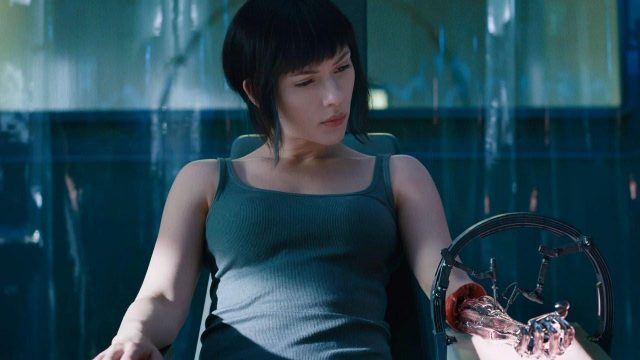
The rest of the audio work in Ghost in the Shell is also impressive, having a touch of feeling just slightly inhuman and haunting. Rather than go for balls-out intensity, the sound mixing instead focuses on a bit of a fantastical element, though one that still manages to convey just how dangerous Section 9’s work truly is. Surprisingly, the movie mostly avoids trappings like explosions and other attention-grabbers in its action scenes, with the most explosive confrontation not really taking place until the climax, instead having the movie rely on audio that is just a bit alien, though still feels believable enough to feel harrowing. This really does seem like anime audio brought to life in a Hollywood blockbuster, and as with the musical score, the sound work is very inspired, and feels very true to the style of Ghost in the Shell.
Even the most cynical of anime purists have to admit an undeniable truth about this Hollywood adaptation of Ghost in the Shell; It’s a visual masterpiece. Words cannot describe how gorgeous and striking Ghost in the Shell constantly looks, even during its least engaging stretches. The mind-blowing amount of detail in the sets is thoroughly unreal, creating a future that manages to feel foreboding, without constantly recycling the same broody, night-drenched future imagery that’s been ripped off from Blade Runner pretty incessantly since the 80’s. The cinematography and general style in Ghost in the Shell is excellent in every respect, and it actually does manage to perfectly replicate the look and feel of the original anime in live-action, with Hollywood-worthy production values. That alone should amaze and delight both anime fans and sci-fi fans alike!
Like I said as well, Ghost in the Shell also simply must be seen in IMAX 3D if you have the means, since that is truly the ideal way to enjoy this visual experience. The 3D presentation in Ghost in the Shell adds quite a bit of haunting immersion to its bizarrely exaggerated, yet infinitely intriguing world, with a few environmental effects like rain and stone also effectively being kicked up during action scenes, to make them feel more gripping. Even with just a standard digital showing, I highly recommend at least springing for a 3D ticket with Ghost in the Shell, which makes an already beautiful-looking movie look even more beautiful and immersive!
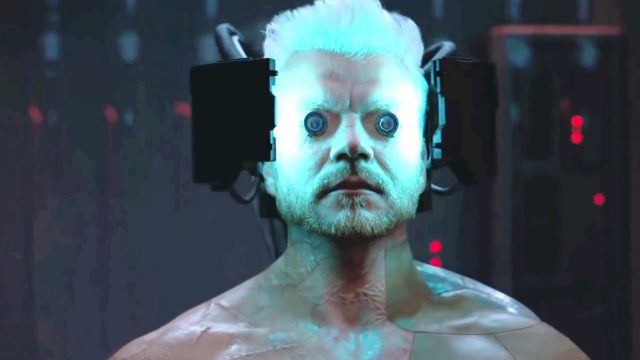
Ghost in the Shell makes pretty great use out of the IMAX screen’s increased real estate as well, which is effectively utilized to increase the imposing scale of this futuristic rendition of Japan quite nicely. The combination of the IMAX screen and the 3D presentation in the movie’s IMAX 3D cut creates what will easily go down as one of the most visually stunning movie experiences of 2017, regardless of any other flaws that Ghost in the Shell may possess. Even the visually ambitious presentation of 2008’s live-action Speed Racer movie feels like an amateur film production when compared to the grand, reverent and visually astonishing Ghost in the Shell, which, if nothing else, is a consistent treat for one’s eyes!
Ghost in the Shell is very welcome proof that Hollywood anime adaptations don’t have to suck. It’s still not a perfect movie, obviously, since its distilled storytelling doesn’t manage to be as interesting as it should be, and its supporting cast, while faithful and stylish-looking, don’t provide effectively developed personalities that manage to stand with the more compelling portrayal of Scarlett Johansson’s Major. Johansson is arguably the best personality in Ghost in the Shell, which makes the controversy surrounding her casting all the more unfortunate, and the increased emphasis on Major’s humanity and development does at least lead to a Hollywood movie adaptation that effectively puts its own spin on the source material, even if it predictably doesn’t manage to surpass it.
That said, the slow-paced, highly introspective tale of Ghost in the Shell suffers from considerably limited appeal, despite the movie’s outstanding visual presentation, cinematography and soundtrack, which finally give Hollywood anime adaptations the proper triple-A blockbuster treatment. That sublime presentation may be slightly wasted on a movie that is seemingly already doomed to be one of 2017’s most expensive box office bombs for distributor, Paramount and development studio, Dreamworks, but Ghost in the Shell does at least represent great progress for Hollywood anime adaptations, while also having plenty of potential as a cult classic in the making.
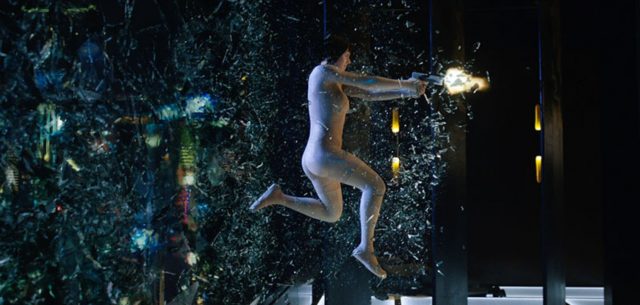
If you’re at least eager to take in the breathtaking visuals and wonderful soundtrack, Ghost in the Shell is best experienced on the big screen, and preferably in IMAX 3D, where that sublime presentation is really at its best. Even if you discover it on home viewing later though, fans of the original anime that can keep an open mind will definitely appreciate this film adaptation for being a faithful, highly well-produced new take on the original story, while open-minded sci-fi fans can at least appreciate an amazing world that they will love to get lost in for the 107-minute runtime.
The dull stretches and anime-flavoured weirdness hold Ghost in the Shell back from being the true catalyst to an anime movie boom for Hollywood on par with the comic book movie boom of the past couple of decades, but it at least makes the case that such a reality isn’t a complete pipe dream. The movie may ultimately be too alienating for mainstream audiences, but that hope alone makes me happy that this adaptation exists.

